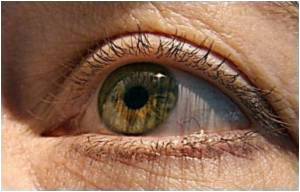Special, retinal photosensitive cells enable blind mice to see patterns and images, claims a new study.

Led by biologist Samer Hattar of The Johns Hopkins University's Krieger School of Arts and Sciences, researchers found that these special photosensitive cells in the rodents' retinas, called intrinsically photosensitive Retinal Ganglion Cells (ipRGCs), do play a key role in image formation.
All mammals, including humans, have ipRGCs, as well as rods and cones.
Hattar, who as an assistant professor in the Department of Biology, said: "Up until now, it was assumed that rods and cones were the only cells capable of detecting light to allow us to form images. But our study shows that even mice which were blind could form low-acuity yet measurable images, using ipRGCs. The exciting thing is that, in theory at least, this means that a blind person could be trained to use his or her ipRGCs to perform simple tasks that require low visual acuity."
"Visual acuity" refers to the sharpness or clarity of a person's (or animal's) vision. Someone with so-called "20/20 vision" can see clearly at a distance of 20 feet what the "average" human being can see at that distance. In contrast, a person with "20/100" vision would have to stand 20 feet away from, for instance, an eye chart that the average person could read from 100 feet away. People with very low visual acuity (worse than "20/100" with corrective lenses) are considered "legally blind."
In addition to providing hope for people with serious vision problems, Hattar's findings hint that, in the past, mammals may have used their ipRGCs for sight/image formation, but during the course of evolution, that function was somehow taken over by rods and cones.
Advertisement
To conduct the study, the team used a special system to genetically label cells and then "trace" them to the rodents' brains before subjecting the mice to a number of vision tests. In one, mice followed the movements of a rotating drum, a test that assessed the animals' ability to track moving objects. In another, the rodents were placed within a "Y"-shaped maze and challenged to escape by selecting the lever that would let them out. That lever was associated with a certain visual pattern. The mice that were blind-they lacked rods, cones and ipRGCs -- couldn't find that lever. But those with only ipRGCs could.
Advertisement
Source-ANI











